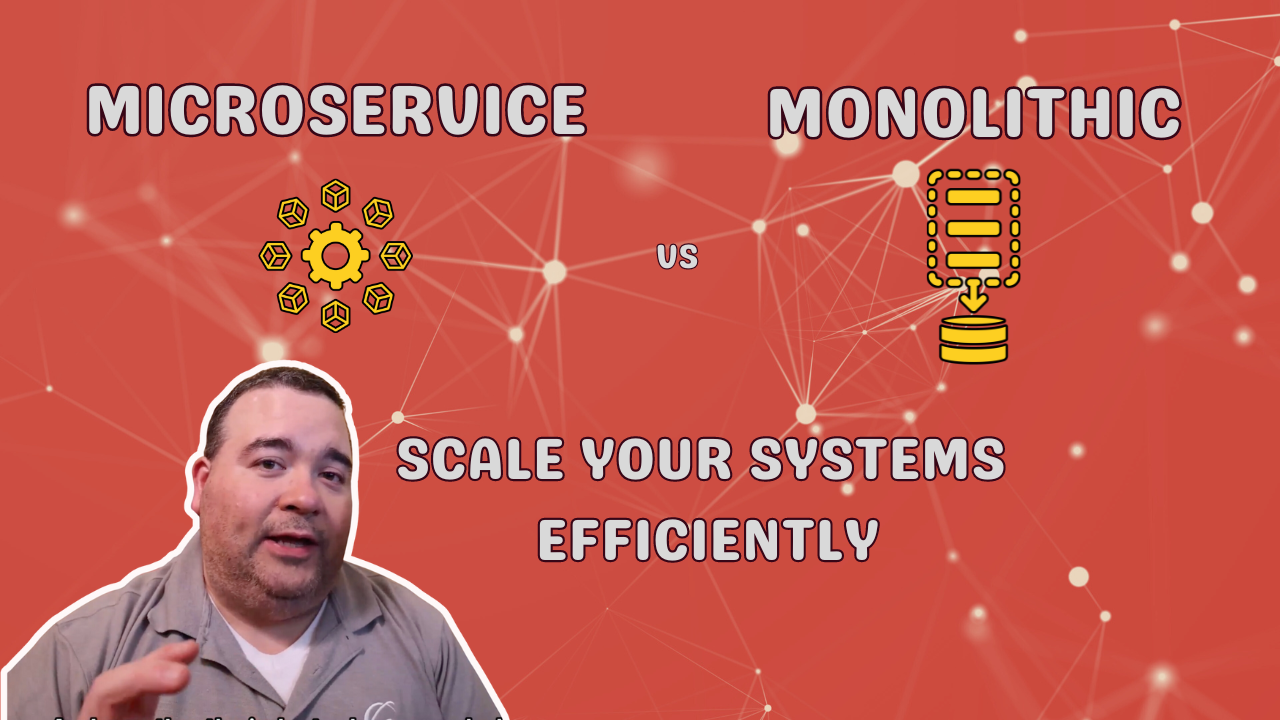In software development, choosing the right architecture is crucial for the success and scalability of your project. Two popular architectures are monolithic and microservice. In this post, we’ll dive deep into the differences between these two approaches and help you understand when to use each one. Watch the full explanation in our YouTube video.
What is Monolithic Architecture?
Monolithic architecture is like an all-in-one system. When prototyping or building something for the first time, you might start with a monolithic approach. This means all the components of your software, including the user interface (UI/UX), backend system, database, and storage, are built within a single box or server.
For example, imagine building a simple web application where the UI, business logic, and data storage are all part of one cohesive unit. This setup is straightforward to manage initially. However, scaling becomes a challenge as your application grows and the demand increases. You can only scale vertically by adding more hardware to the existing server, which can be costly and inefficient.
Advantages of Monolithic Architecture
- Simplicity in development and deployment
- Easier debugging and testing in the initial stages
- Suitable for small applications or prototypes
Disadvantages of Monolithic Architecture
- Difficult to scale horizontally
- Risk of a single point of failure
- Harder to maintain and update as the application grows
Understanding Microservice Architecture
Microservice architecture, on the other hand, breaks down the application into smaller, self-contained services. Each service operates independently, such as UI/UX, backend API, database, and storage. This allows for more flexibility and scalability.
For instance, in a microservice architecture, your user interface could be served from a content distribution network (CDN), making it faster and more responsive for users across the globe. The backend system can be split into multiple instances, each managed by a load balancer to distribute traffic evenly. This approach not only improves performance but also enhances reliability.
Advantages of Microservice Architecture
- Scalability: Easily scale individual components based on demand
- Flexibility: Independent services can be updated and deployed without affecting the whole system
- Resilience: Reduced risk of a single point of failure
Disadvantages of Microservice Architecture
- Complexity in management and orchestration
- Requires robust monitoring and logging systems
- Higher initial setup and maintenance costs
A Real-World Example
Consider a growing e-commerce platform. Initially, the platform starts with a monolithic architecture. All functionalities, including user management, product listings, and payment processing, are within a single application. As the user base expands, the platform experiences slow load times and frequent downtimes.
Transitioning to a microservice architecture, the platform separates these functionalities into individual services. User management is handled by a dedicated service, product listings by another, and payment processing by another. Each service can be scaled independently, ensuring that an increase in user traffic does not affect the performance of other services.
Conclusion
Choosing between monolithic and microservice architecture depends on your project’s specific needs. Monolithic architecture may suffice for small, simple applications. However, microservice architecture is the way to go for large, complex systems requiring scalability and flexibility.
Watch our YouTube video for a detailed explanation and visual representation of these concepts. If you have any questions or need further clarification, feel free to leave a comment on the video. We’re here to help you navigate the architectural choices for your software development projects.

